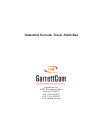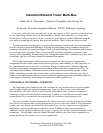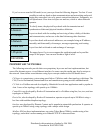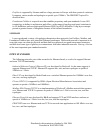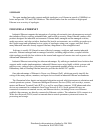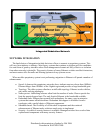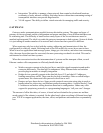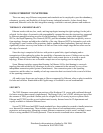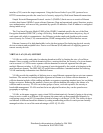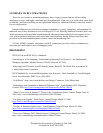USING ETHERNET TO NETWORK
There are many ways Ethernet components and standards can be employed to provide redundancy,
robustness, security, and flexibility of design for many industrial networks. As has already been
mentioned, Ethernet is also the best integration strategy available to network planners and architects.
TOPOLOGY AND REDUNDANCY
Ethernet works with star, bus, mesh, and ring topologies insuring the right topology for the job is
selected. At the edges of a network with geographically separated devices the ring topology supported
by Ethernet managed switches provides several advantages. Ethernet switches that support IEEE
802.1w, the Rapid Spanning Tree Protocol (RSTP), provide redundant links that can quickly recover
from topology changes and add to the reliability of the ring. Because RSTP is designed to work with
all topologies, some vendors offer proprietary and/or standards-based redundancy protocols that can
significantly reduce recovery time down to as little as 50ms in the simple rings that are often used at
the edge of a network.
Since the ring is comprised of devices with point-to-point links, signal reshaping and re-
transmission of the sending leg reduce the possibility of transmission errors. Cabling costs are also
significantly reduced from installing a separate link to each remote device as in a star or mesh
topology. Where all devices are co-located a simple star or bus topology can be employed.
Some Ethernet switches support dual-homing. In Ethernet LANs, dual-homing is a network
topology that adds reliability by allowing a device to be connected to the network by way of two
independent connection points (points of attachment). One connection point is the operating
connection, and the other is a standby or back-up connection that is activated in the event of a failure
of the operating connection.
All media types from coax and copper to fiber are supported by Ethernet, often as plug-in modules
for hubs and switches. Bandwidth to the Gigabit range is available in several combinations.
SECURITY
The 2003 Slammer worm attack on portions of the Northeast U.S. power grid confirmed the need
for better security than currently implemented. The Energy Policy Act of 2005, which goes into effect
the summer of 2006, provided a further push for a higher level of security in power systems. Both
Ethernet and TCP/IP provide several sophisticated security features honed in IT departments and
equally available to industrial Ethernet users.
Several TCP/IP-based and IEEE-based standards have been updated or created to handle intrusions
over Internet-like connections. These include various forms of user authentication, password
protection, and encryption. Managing a remote Ethernet component (switch, router, and hub) is most
effective using standard GUI-based protocols. These in turn are translated into a command line
Distributed with permission of author by ISA 2006
Presented at ISA EXPO 2006



